At Anime NYC 2025, fans were treated to “Black”, one of the most daring shorts in Star Wars: Visions Volume 3, followed by a rare Q&A with its director, Shinya Ohira. Known for his expressive, almost hallucinatory animation in projects like Akira, Spirited Away, and Kill Bill Vol. 1, Ohira brought that same sensibility to “Black”. The result is a short that’s surreal, music-driven, and open to interpretation, something that feels experimental, yet still undeniably Star Wars.
When asked what inspired his vision for the short, Ohira pointed to Paths of Hate, Damian Nenow’s 2010 animated short about two fighter pilots locked in a cycle of rage and the way aerial battles could embody that feeling. Watching “Black,” it’s easy to see that inspiration comes through. The short isn’t about a simple good-versus-evil inner dogfight; it’s about the lingering scars of conflict and the way war reshapes identity.
Ohira called the story “very courageous” and even noted how the ending, where the character becomes young again, was one of the elements that excited him. It’s not a literal transformation so much as an evocative one: a visual metaphor that forces viewers to grapple with its meaning.
He explained that he built his team from veteran animators he personally knew, some of whom had been working with him for years as students. Early sketches of “Black” date back to September 2023, a reminder that this short has been carefully developed long before fans got to see it. And you feel that time in the finished product. “Black” isn’t rushed.
“Black” from Star Wars Visions Volume 3 sticks with you because it doesn’t tell you what it means.
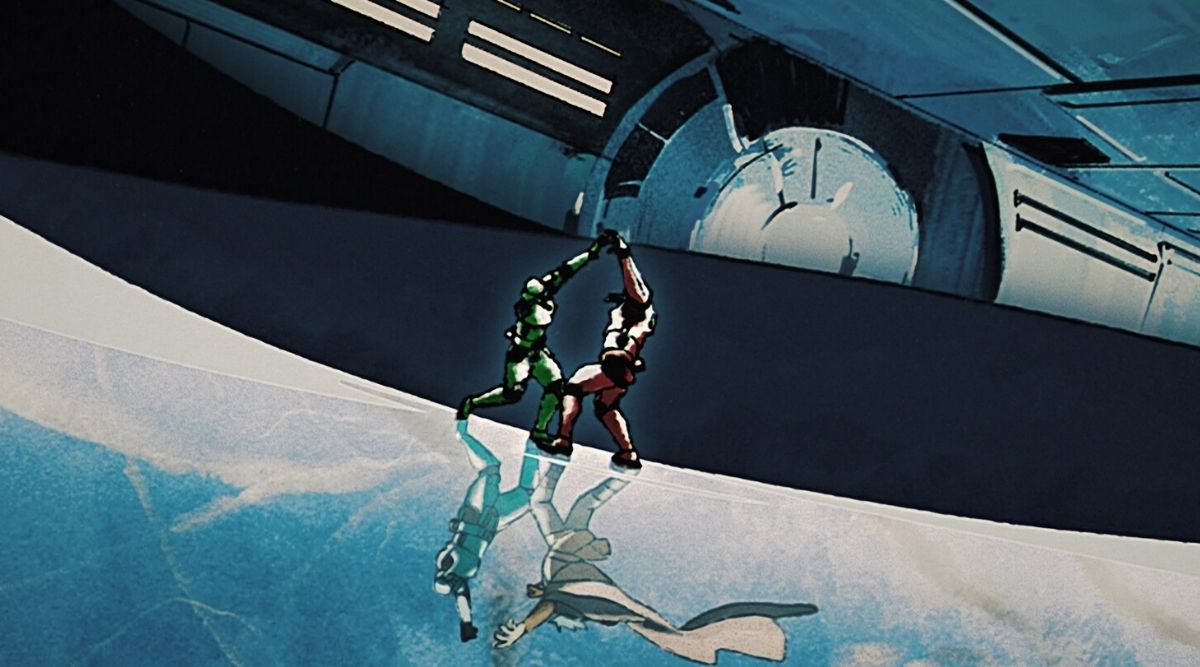
Each sequence lingers, each shift in style feels deliberate, all pulled together by the score from Hiroyuki Sawano. The music becomes the narrative, swelling from serene moments into frantic bursts of energy; it’s as if the stormtrooper’s fractured mind is being translated into jazz.
Ohira was also asked about his favorite Visions shorts. He praised both the Japanese and international contributions, but admitted he gravitates to those with strong artistic direction, “rather than still depictions.” He likes pieces that linger, that leave an afterimage. “Black” is very much in that vein. It doesn’t give you a straightforward story like “The Ninth Jedi” or “The Duel.”
Instead, it leaves you with impressions: butterflies that symbolize good fortune, a collapsing Death Star where hidden details slip in and out of view, a stormtrooper battling himself as much as the war around him. It’s a short that sticks with you because it doesn’t tell you exactly what it means.
Animation allows classic Star Wars vehicles and droids to be reimagined with great stylization.

When asked about designing vehicles, Ohira admitted it wasn’t easy. He wanted everything to be instantly recognizable as Star Wars, so he traced Lucasfilm reference materials carefully. The Death Star, in particular, was a struggle to scale correctly, but “everything came together in the end.” What’s fascinating here is that Star Wars vehicle design is already some of the most iconic in cinema history; it’s hard to improve on the originals.
But animation allows for stylization, for bending and refracting those familiar silhouettes until they feel new again. Ohira’s approach in “Black” does exactly that. You’ve never seen the Death Star quite like this before, but it’s still recognizable, and that balance between innovation and reverence is part of what makes the short so powerful.
His inspirations also say a lot about how “Black” came to life. Ohira cited Masahito Yamashita as a huge influence, saying he has admired his work since high school. Whenever he struggles, he goes back to Yamashita’s pictures to find his footing again. That grounding in expressive animation informs the entire short. You can feel that lineage in the way “Black” favors movement, abstraction, and mood over clean, literal storytelling.
Director Shinya Ohira drew inspiration from Star Wars’ darkest stories when creating “Black.”
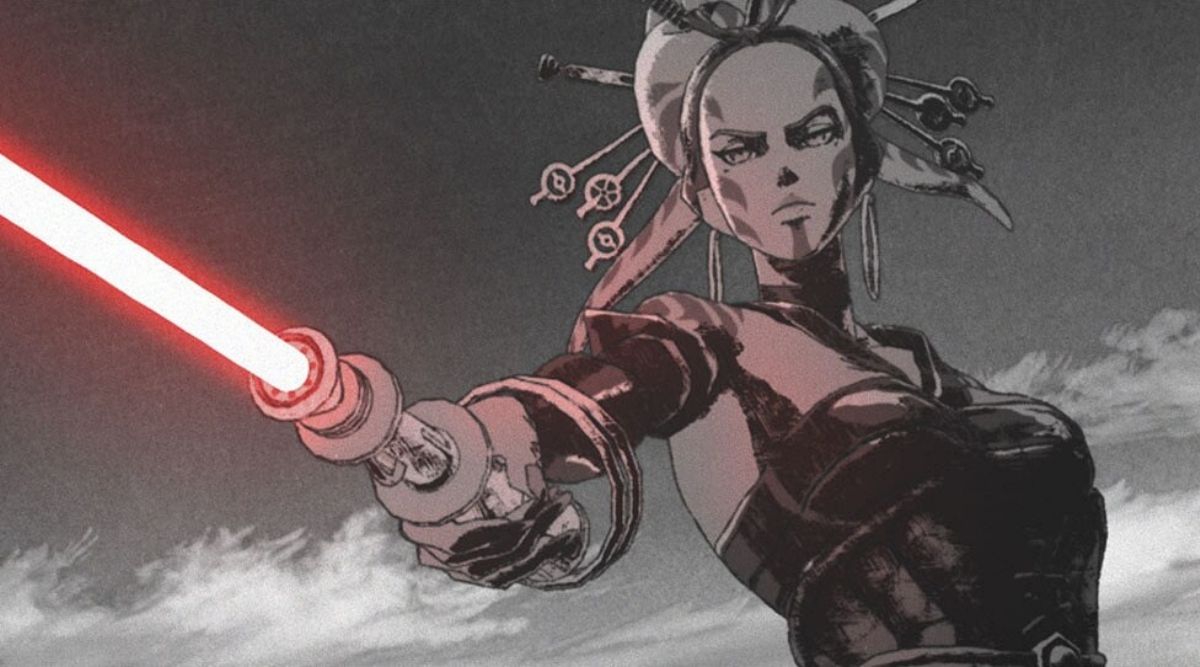
That makes sense when you consider Ohira’s favorite Star Wars films are Rogue One and Revenge of the Sith; two of the saga’s darkest, most tragic entries. Both films show war as a personal cost rather than a sweeping triumph, and “Black” fits neatly into that tradition. As Ohira put it, “Everybody knows the stormtrooper visuals. Within that, I wanted to show what sacrifice means in the name of justice, and I also wanted to tell the story of pain and suffering that comes with war and conflict.”
The attention to detail throughout is staggering. Scene 8 hides a destroyed Millennium Falcon amid red-and-green world imagery. Scene 4’s butterflies weren’t generic—Ohira researched real species tied to happiness and good fortune. It’s the kind of obsessive craftsmanship that rewards close viewing and rewatching, which is exactly what this short demands.
For Ohira, “Black” also began with music. “Originally, there was no real story,” he explained. “It started as a promo for the music video — just a cool Star Wars battle video. But for the next stage, we needed a story. We needed a reason for something to develop. From the beginning, the music was the main thing.” That origin explains why “Black” feels almost AMV-coded, but here, the fusion of imagery and sound is used to explore war, identity, and memory.
“Black” is a reminder that some action sequences are only possible in animation.

Ohira also spoke candidly about production, joking that he remembered “a lot of pain and suffering.” But for him, that’s what makes the job interesting. The Death Star was drawn with excruciating detail, the battle sequences were painstakingly animated, and every frame demanded something of the team. “It was an arduous task for the animators, but it was worth it,” Ohira said. “It’s really something people have never seen before.”
When asked what fans should take away, he didn’t hesitate: “There are some things, some action sequences, that can only really be done in animation. The sheer length of the cuts, the animated movement, and how interesting it can be. I hope viewers find it interesting as well.” That statement cuts to the heart of Visions itself. These are stories that thrive in animation, because only animation can push Star Wars into certain directions.
Finally, he offered words of advice to aspiring animators. “You really have to enjoy what you do,” he said. “Be able to have fun drawing the story. This applies to manga but also to realistic elements. You have to hone your skills in terms of drawing things fast.”
“Black” is so big and bold, it feels theatrical in scope.

Ohira continued, “With drawings themselves and how the story plays out, you have to be able to do both and enjoy doing them both.” For Ohira, passion is the engine of craft — the only way to keep going through the pain and suffering that animation inevitably demands.
James Waugh, Lucasfilm’s VP of Franchise Content and Strategy, was also in the room at Anime NYC. After watching “Black” on the big screen, he summed it up simply: “This is the first time I have seen it on the big screen, and for me, that’s the way Star Wars is meant to be watched.” It’s hard to disagree.”Black” feels theatrical in scope, the kind of short you want to see in a theater and then dissect with friends as soon as the lights come up.
If this is what Visions Volume 3 is bringing, then we’re in for something special. Ohira’s “Black” is a haunting reminder that Star Wars can be bold, interpretive, and deeply human and that anime may still be the best way to see this galaxy anew.
Star Wars: Visions Volume 3 premieres October 29, 2025, exclusively on Disney+.

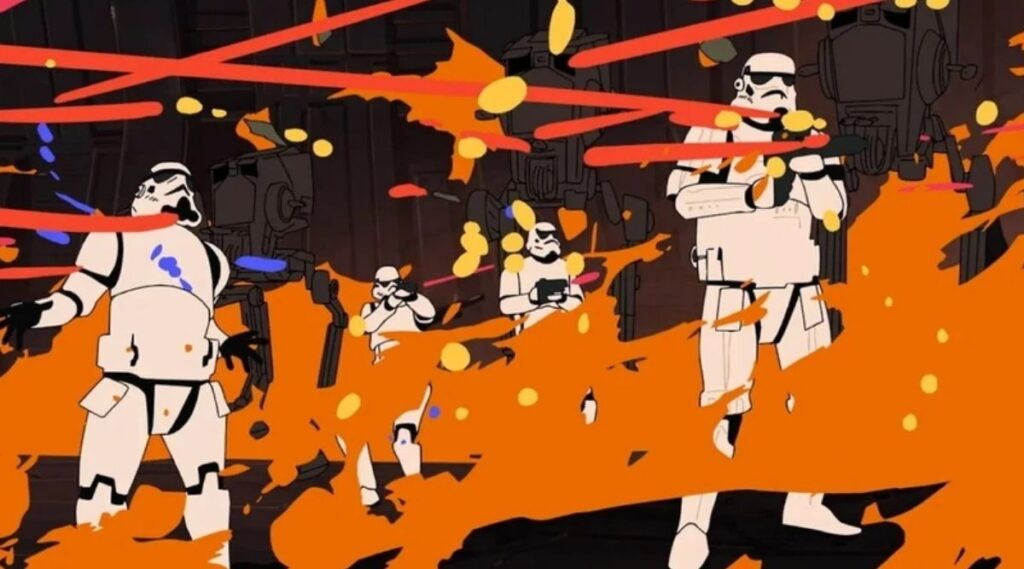

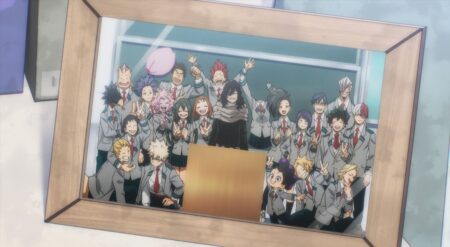
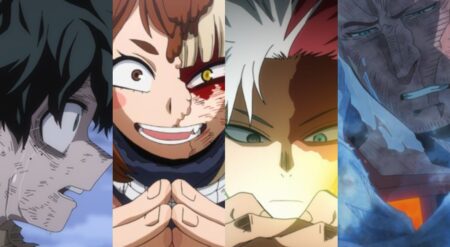
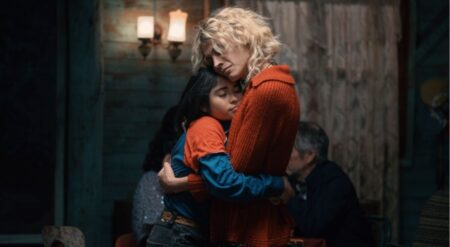
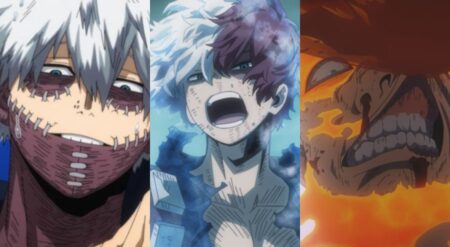
![[EXCLUSIVE] ‘Invincible VS’ Devs Dive Deep Into Their New Original Character: Ella Mental Ella Mental in Invincible VS](https://butwhytho.net/wp-content/uploads/2025/12/Invincible-VS-Ella-Mental-But-Why-Tho-1-450x247.jpg)